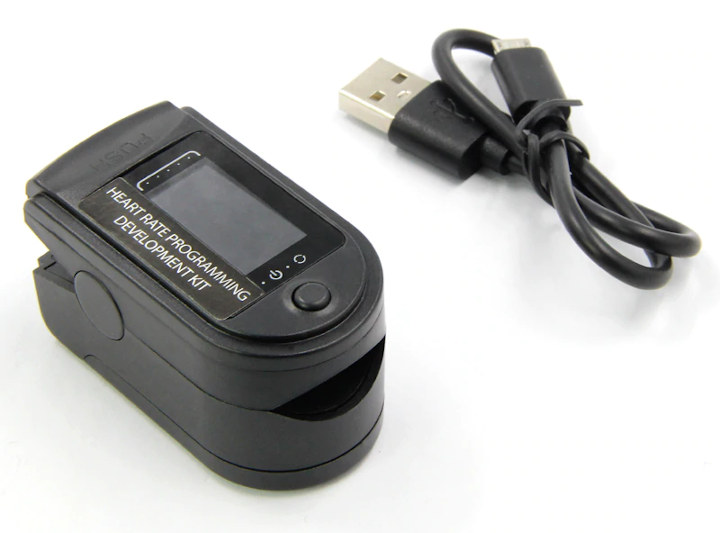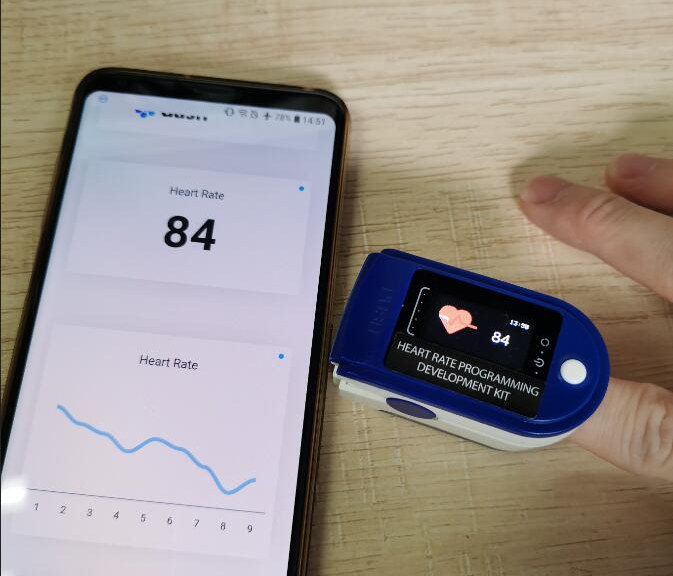LilyGO has launched a fair amount of ESP32 boards with some less common features like Ethernet and OLED Display, cellular connectivity, LoRa & GPS, PoE, watch form factor, and more.
Their latest product is somewhat different from their earlier boards with the TTGO Heart rate programming development kit being closer to a reference design since it comes with an enclosure similar to commercial products. The heart rate devkit features ESP32 WiFi and Bluetooth SoC, a small LCD, as well as a Maxim Integrated MAX30102 pulse oximeter and heart-rate sensor.
TTGO heart rate development kit specifications:
- SoC – Espressif Systems ESP32 dual-core Tensilica SoC with WiFi 4 & Bluetooth connectivity
- Display – 0.96-inch IPS LCD via ST7735 SPI controller
- Sensors
- MAX30102 heart rate blood oxygen I2C sensor
- MPU6050 6-axis accelerometer and gyroscope (I2C)
- Debugging – Micro USB port via CP2104 USB to TTL bridge
- Misc -PCF8563 RTC, user button
- Battery – 200 mAh; charging voltage and current: 5V, 500mah via micro USB port
The company provides samples and instructions for the Arduino IDE and PlatformIO IDE on Github. The “HeartRateMonitor” sketch starts a web server accessible in either AP or client mode, read data from the sensors and the RTC, and display the results on the LCD or in a web browser. The webpage is supposed to display two values and charts one being the heart rate and the other the blood oxygen level (Sp02), aka oxygen saturation.
TTGO heart rate development kit can be purchased on Aliexpress for $19.32 plus shipping, and ships with a micro USB cable.

Jean-Luc started CNX Software in 2010 as a part-time endeavor, before quitting his job as a software engineering manager, and starting to write daily news, and reviews full time later in 2011.
Support CNX Software! Donate via cryptocurrencies, become a Patron on Patreon, or purchase goods on Amazon or Aliexpress







Postage to germany amounts to € 21,62 . 🙁
I’ve played with some of those clip-on pulse oximeters and unfortunately they get uncomfortable really quickly. IMHO they’re really only good for a quick spot measurement, not for monitoring over an extended period. Someday I’ll look into getting a “proper” rubber thimble type oximeter to experiment with.